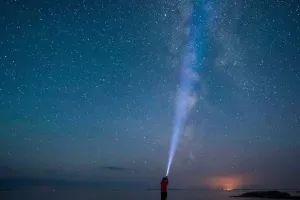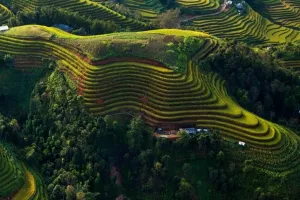Whether it’s the Sahara in Africa, the Gobi in China, or another world-famous desert, you realize just how big the world is when you’re standing in the middle of a desert surrounded by miles and miles of open land.
The opportunity to trek to a desert, for most people, is a once-in-a-lifetime opportunity. While you may get caught up in the excitement of traveling to such an awe-inspiring sight, there are some things you need to do ahead of time to make sure you’re prepared and stay healthy during your trip. Remember – this is a desolate, barren place, and it can be dangerous. To make sure that your desert adventure is a success, check out this list of travel tips.
1. When To Go
In most cases, spring and fall are the best times to visit the desert. It just goes, without saying, that it’s too hot in the summer. In the Mojave, desert temperatures can be very cold in the winter and consistently in excess of 100 °F in the summer and early fall. In the late winter and early spring, strong winds are common in excess of 25 mph, with gusts of 75 mph or more are not uncommon. In Death Valley, temperatures of 130°F are frequent.
2. Carry Tall Gaiters
If you are hiking cross-country through heavy vegetation, or in a few spots on the deserts trail with difficult bushwhacks, tall gaiters can also provide a peace of mind when traveling through tall grasses that may be hiding rattlesnakes.
3. Off-Road Adventures
Make sure you know where you’re going as it’s easy to get lost in the desert. Before striking out on backcountry roads or hiking along trails, it’s a good idea to consult with park rangers. Road and trail conditions change quickly and often – they can tell what the current conditions are. Plus, someone will have a general idea of where you are. In hot weather, it is advised to stay on the main paved roads since they are patrolled periodically.
4. Use A Hiking Pole or Stick
Rustle tall grasses as you hike to help alert any snakes or wildlife to your presence and give both of you a chance to move away from an encounter. Hiking poles are also useful when climbing or descending steep terrain, and some ultralight backpacking shelters can be set up with a hiking pole too, negating the need to carry tent poles.
5. Drinking-Water
Carry at least one gallon per day/person of drinking water. Plastic containers work better than metal containers or water bags. While drinking water can be obtained at several places in desert parks, you cannot rely on this, as some water sources must be purified before it is suitable to drink. If you are relying on a spring that is listed on a map, when you arrive there, it might be dried up. In fact, it’s probably a good idea to follow the minimum guidelines for one gallon/person/day, but it wouldn’t hurt to have a little extra. Don’t ignore this guideline if you’re just traveling across the desert by car. Any number of things could happen and you need to have a stocked up water supply.
6. Consume Plenty of Electrolytes
Your body needs salts and sugars to help you absorb the water you are drinking. Drink mixes can be a good form of electrolytes and can also help mask the flavor of the dirtier water sources in the desert.
7. Sun and Heat Exposure
In the desert, you just need to avoid exposure to the sun at all costs. Sunburns can be very serious, and heatstroke or heat exhaustion can prove fatal. It is advisable to wear a hat, sunscreen, and dark sunglasses. Even though it’s hot, plan on wearing light, loose long sleeve shirts, and long pants. Remember to reapply sunscreen periodically to any exposed areas. Time your walking in the early morning and late afternoon when the sun is not as intense.


